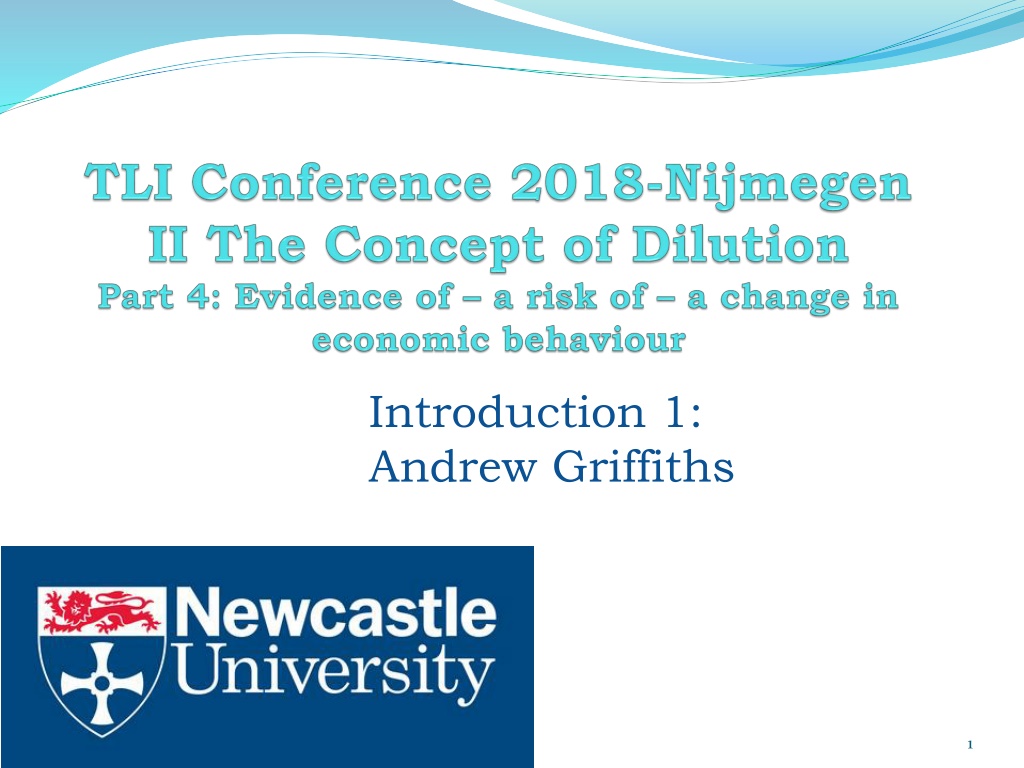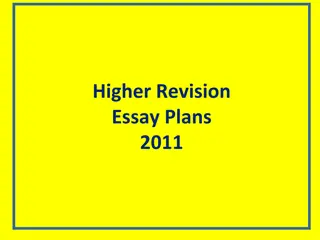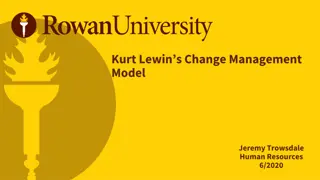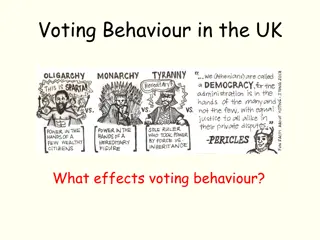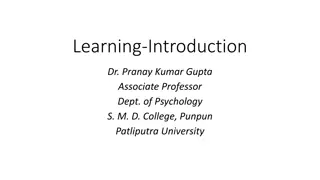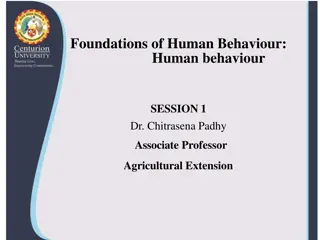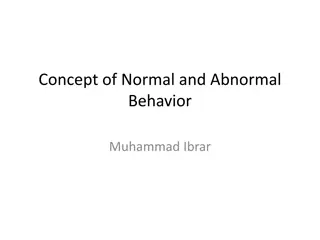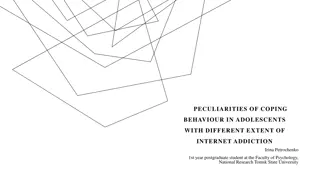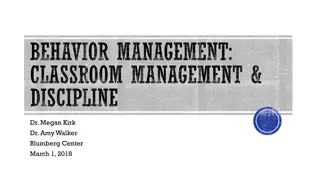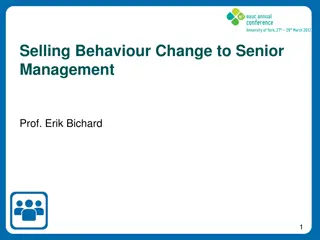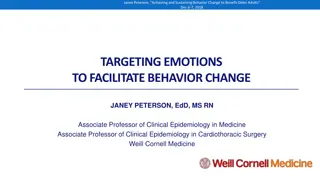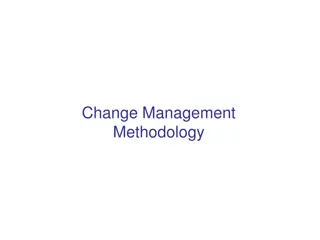Key Issues in Assessing Economic Behavior Change
Discussing the nature of damage in assessing economic behavior change, criteria for evaluation, evidence requirements, conditions for additional protection of trademarks, and the nature and forms of damage to a trademark's impact and value.
Download Presentation

Please find below an Image/Link to download the presentation.
The content on the website is provided AS IS for your information and personal use only. It may not be sold, licensed, or shared on other websites without obtaining consent from the author.If you encounter any issues during the download, it is possible that the publisher has removed the file from their server.
You are allowed to download the files provided on this website for personal or commercial use, subject to the condition that they are used lawfully. All files are the property of their respective owners.
The content on the website is provided AS IS for your information and personal use only. It may not be sold, licensed, or shared on other websites without obtaining consent from the author.
E N D
Presentation Transcript
Introduction 1: Andrew Griffiths 1
Some Issues to Discuss The nature of the damage at issue? The right criterion to assess this damage? What constitutes satisfactory evidence of a likely change in the economic behaviour of the average consumer? 2
Conditions of Additional Protection Key conditions: P s TM is known by at least a significant part of consumers of the goods/ services for which registered ( reputation ) D is using an identical/ similar sign in the course of trade for goods/ services of an identical/ similar/ dissimilar kind The identity/ similarity of this sign gives rise to a link between the sign and P s TM in the mind of the average consumer D s use of the sign gives rise to (i) detriment to the distinctive character of P s TM; and/or (ii) detriment to its repute; and or takes unfair advantage of these D s use of the sign is without due cause (burden on D) NB: Protected TMs may lie along a spectrum above the reputation threshold Protection increases in line with the strength (familiarity and uniqueness) of P s TM 3
The Nature of the Damage? What is being protected from damage? A TM that has established a presence in the minds of at least a significant proportion of consumers of goods/ services of the kind for which it is registered (a reputation ) A potential presence in the minds of other consumers of goods/services of this kind and other kinds A presence that may be triggered when relevant consumers encounter an identical or similar sign ( brought to mind ) A presence that may have particular salience and prominence and/or an attractive reputation in the minds of these consumers An influence/ potential influence on the behaviour of all consumers of goods/ services of the relevant kind/ other kinds Value of this Attracts demand to P s goods/ services Facilitates P s marketing efforts to strengthen and/or attract demand 4
Forms of Damage? Damage to the TM s presence and/or potential impact Weakening its ability to signify a specific commercial origin for goods/ services of the kind for which it is registered and (potentially) other kinds Reducing its power to attract demand to these goods/ services Reducing its value as something around which advertising/marketing efforts can be focused Providing a competing point of reference that reduces its salience and prominence in the minds of consumers Affecting its potential impact on consumers who are not yet familiar with it Evidence of this damage? Cannot look inside the minds of consumers Need to consider how this damage may manifest externally 5
Is a Change in the Economic Behaviour of Consumers the Right Criterion? Need an objective condition To avoid giving P s TM excessive protection To avoid situations in which economic operators improperly appropriate certain signs since this could damage competition To give P a feasible burden of proof To balance these interests Relevance of the economic behaviour of consumers? This is the external manifestation of damage to a mental presence/ influence/ potential influence A change can be evidenced: Directly, with evidence concerning the impact/ potential impact on consumers economic behaviour (e.g. showing a likelihood of confusion) Indirectly, with evidence based on logical deductions from other facts such as its impact/ potential impact on P s marketing strategy/ activity and/or the likely effect of D s business plans) 6
What must the Evidence Substantiate? Sufficient to show: A serious risk of detriment: Helena Rubinstein at [95] This may be established on the basis of logical deductions made from an analysis of the probabilities and by taking account of the normal practice in the relevant commercial sector as well as all the other circumstances of the case Not sufficient to show: A hypothetical risk of detriment Deductions which are the result of mere suppositions Deductions made solely from subjective elements such as consumers perceptions: e.g. the mere fact that consumers note the similarity of a new sign, but are not confused 7
Relevance of a Likelihood of Confusion? Environmental Manufacturing at [37] The concept of change in the economic behaviour of the average consumer lays down an objective condition. That change cannot be deduced solely from subjective elements such as consumers perceptions. The mere fact that consumers note the presence of a new sign similar to an earlier sign is not sufficient of itself to establish the existence of a detriment or a risk of detriment to the distinctive character of the earlier mark within the meaning of Article 8(5) of Regulation No 207/2009, in as much as that similarity does not cause any confusion in their minds Some points: This gives an example where the only evidence is the mere fact that relevant consumers note the presence of D s sign as being similar to P s TM without confusion. It is not suggesting confusion as a prerequisite, but qualifying the similarity of D s sign in this example: it does not rule out the possibility that the economic behaviour of consumers could be changed without confusion Nevertheless, a likelihood of confusion can be a key factor, especially where P s TM is not particularly strong 8
Proving a Change in the Economic Behaviour of Consumers Some questions: What must the evidence show to go beyond making deductions from mere suppositions and/or subjective elements ? The relevance of a likelihood of confusion? Some issues arising from the UK case law Does the evidence need to quantify a change in economic behaviour? The significance of the impact on consumers of the relevant goods/services who are not (yet) familiar with the TM? The significance of potential swamping of a TM and wrong way round confusion (or reverse confusion ) where D s sign is (potentially) more powerful than P s TM? The significance of the fact that P may wish to expand its range of activities within the scope of the products for which its TM is registered and/or beyond? 9
Some UK Case Law Comic Enterprises v 20th Century Fox (2016) P s TMs: two device marks incorporating the glee club , which was registered and being used for comedy/ entertainment venues At the relevant time, P had two established and two new venues and was planning further expansion D s sign was glee , the name of a TV series that D was heavily promoting, and also being used on related merchandise etc. P s evidence showed significant reverse confusion , which was having an adverse impact on P s potential consumers, compromising P s brand and inhibiting further expansion Azumi v Zuma s Choice Pet Products (2017) P s TMs: included the word Zuma , registered for food and restaurant services, being used for a small chain of high end Japanese restaurants and had acquired a strong reputation D s signs included Zuma and Dine in with Zuma , which it used on a website and was planning to use to market a range of upmarket dog food, with Zuma being the name of D s controller D2 s pet dog Since D had not begun significant trading, P invited the court to make deductions from the circumstances of the case and D s business plans 10
What the Evidence Showed? High Court/ Court of Appeal in Comic Enterprises: It was not necessary to provide evidence quantifying a change in economic behaviour All that was needed was objective evidence that there will be a change in the economic behaviour of consumers Did not accept speculation concerning reasons behind relatively low turnover figures for P s new venues Accepted evidence that showed significant reverse confusion Accepted evidence that showed P s difficulties in marketing/ promoting new venues due to likelihood of reverse confusion High Court in Azumi The necessary link was established in particular through the sign Dine in with Zuma , which was unusual in the context of pet food. Accepted that there was a serious likelihood of an adverse effect on consumer behaviour based on logical deductions from D s marketing plans, the inherent tension between dog food and human food and the even greater tension between dog food and food served in high quality restaurants 11
Impact on Potential Expansion by P Where P has the potential to expand its range of activities i.e. within the range of goods/ services for which its TM is registered Courts have considered evidence of likely impact of D s sign on economic behaviour of potential consumers as well as of existing customers Maier v Asos (2015); Comic Enterprises (2016) A real risk of reverse confusion and potential swamping of P s TM by D s sign are relevant factors here Protection should enable P to derive full benefit from its own branding and marketing efforts to which its registration of its TM should entitle it How far should this apply to potential expansion beyond the range of goods/ services for which it is registered? 12
Further Points on a Likelihood of Confusion Claims for detriment to distinctive character have often involved a likelihood of confusion of some kind, including reverse confusion . In the UK, several claims have been brought by Sky: where these have succeeded, a likelihood of confusion has also been found although this has not been treated as a prerequisite: SkyDrive (2013); and Skyscape (2016) But see Skykick (2018) where the claim did not succeed because in the IT field SKY is far from being unique having regard to the SKY formative marks used by third parties and in the absence of a likelihood of confusion the judge was not persuaded that there is any real risk of detriment to the distinctive character of P s TMs. Detriment should include anything that significantly inhibits P s potential to expand its range of activities across the full range of goods/ services The ECJ has accepted that detriment should include activity that may contribute to turning P s TM into a generic term: Interflora at [79] 13
Thank you! 14
